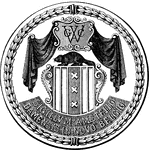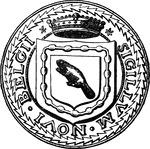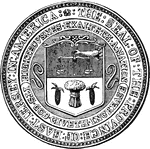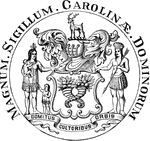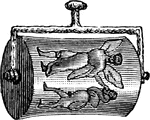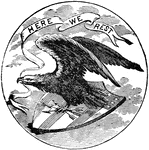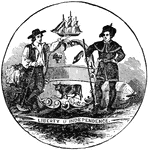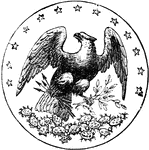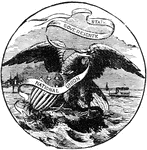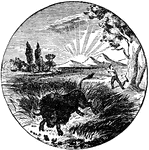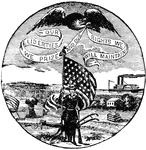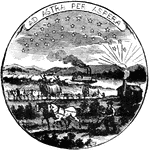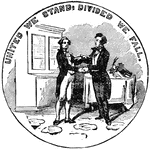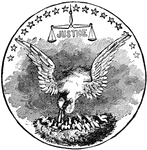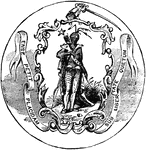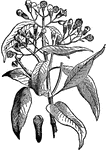
Cloves
"Cloves are a very pungent and aromatic spice, the dried flower-buds of a tree a native of the Molucca…
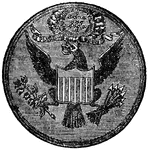
Eagle on Seal of United States
"The Eagle is a gold coin of the United States, value $10; half-eagle, $5; quarter-eagle, $2.50, double…
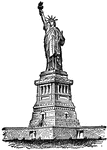
Statue of Liberty
"The Statue of Lberty is a colossal statue on Bedloe's Island, N.Y. On Oct. 28, 1886, after more than…

City Hall of New York
"New York is a city in Southern New York; coextensive with New York, Kings, Queens, and Richmond counties,…
!["New York is a city in Southern New York; coextensive with New York, Kings, Queens, and Richmond counties, on New York Bay, the Hudson and East rivers, Long Island Sound and the Atlantic Ocean; the first city in the United States in population and commercial importance, and after London, the largest metropolitan center in the world. New York is noted for the number and height of its office buildings. In 1911 there were 50 such structures in occupancy, ranging from 14 to 50 stories in height, or from 179 to 700 feet above ground level, and 16 more were nearing completion. The tallest building was that of the Metropolitan Life Insurance Company, 700 and one quarter feet to top of lantern on its majestic tower. Other conspicuous ones [include the] Park Row, 382 [feet]."—(Charles Leonard-Stuart, 1911)](https://etc.usf.edu/clipart/15600/15666/nyparkrow_15666_mth.gif)
Park Row Building of New York
"New York is a city in Southern New York; coextensive with New York, Kings, Queens, and Richmond counties,…

Hooded Seal
"The Seal, of the family Phocidæ, or seal tribe, are, of all four-limbed mammiferous animals,…

Roman galley
"Elated by the victory, the Romans now determined to drive Carthage out of the island altogether. This,…

Bust of Homer
"Of the Homeric poems the Iliad and the Odyssey were the most distinguished and have alone come down…
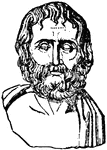
Euripides
"Euripides was born in the island of Salamis, in B.C. 480, his parents having been among those who fled…
Pons Cestius
"A bridge. As the rivers of Greece were small, and the use of the arch known to them only to a limited…

Pons Aelius
"A bridge. As the rivers of Greece were small, and the use of the arch known to them only to a limited…
Pons Ariminum
"A bridge. As the rivers of Greece were small, and the use of the arch known to them only to a limited…
Pons Trajan
"A bridge. As the rivers of Greece were small, and the use of the arch known to them only to a limited…
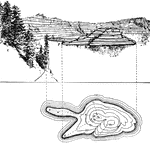
Elevation map
"The nearer the contours on a map are to one another, the steeper is the slope, and the farther the…
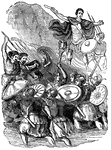
Caesar in England
"All histories of England commence with the invasion of Julius Caesar, the earliest event in that quarter…

Napoleon Bonaparte
"The celebrated warrior and Emperor of the French, Napoleon Bonaparte, was born at Ajaccio, in the island…
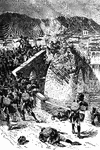
Montserrat
Expedition of Montserrat. In 1782, during the American Revolutionary War, France briefly captured Montserrat…

Pear Design
"Also known as the cone, the palm leaf, the river loop, the crown jewel, the seal, the almond, the feather,…
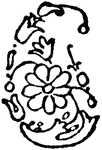
Pear Design
"Also known as the cone, the palm leaf, the river loop, the crown jewel, the seal, the almond, the feather,…

Pear Design
"Also known as the cone, the palm leaf, the river loop, the crown jewel, the seal, the almond, the feather,…

Pear Design
"Also known as the cone, the palm leaf, the river loop, the crown jewel, the seal, the almond, the feather,…
Pear Design
"Also known as the cone, the palm leaf, the river loop, the crown jewel, the seal, the almond, the feather,…
Pear Design
"Also known as the cone, the palm leaf, the river loop, the crown jewel, the seal, the almond, the feather,…
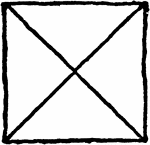
Solomon's Seal
Built on the right angle triangle and, like the Signet of David, it is found in many of the Turkish…
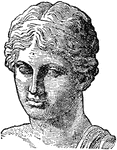
Sappho
An Ancient Greek lyric poet from the city of Eressos on the island of Lesbos, which was a cultural centre…

Seal
The general name of certain genera of carnivorous mammals, havin feet adapted for swimming, and being…
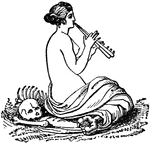
Siren
In Greek legends, the sea nymphs that were seated on the island of the Sirens, off the southwest coast…
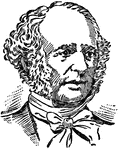
Cornelius Vanderbilt
A capitalist and philanthropist, born near Stapleton, Staten Island, New York, May 27, 1794; died in…
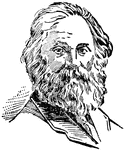
Walt Whitman
A poet, born in West Hills, Long Island, New York, May 31, 1819; died in Camden, New Jersey, March 25,…
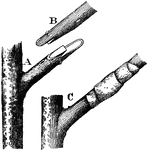
Tongue Grafting
To graft two plants together using the tongue or whip grafting approach, you must first make a sloping…
High Island
This is an illustration of an island with an altitude of two thousand feet or more. It is surrounded…
